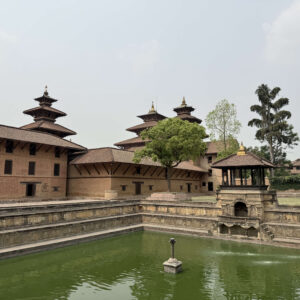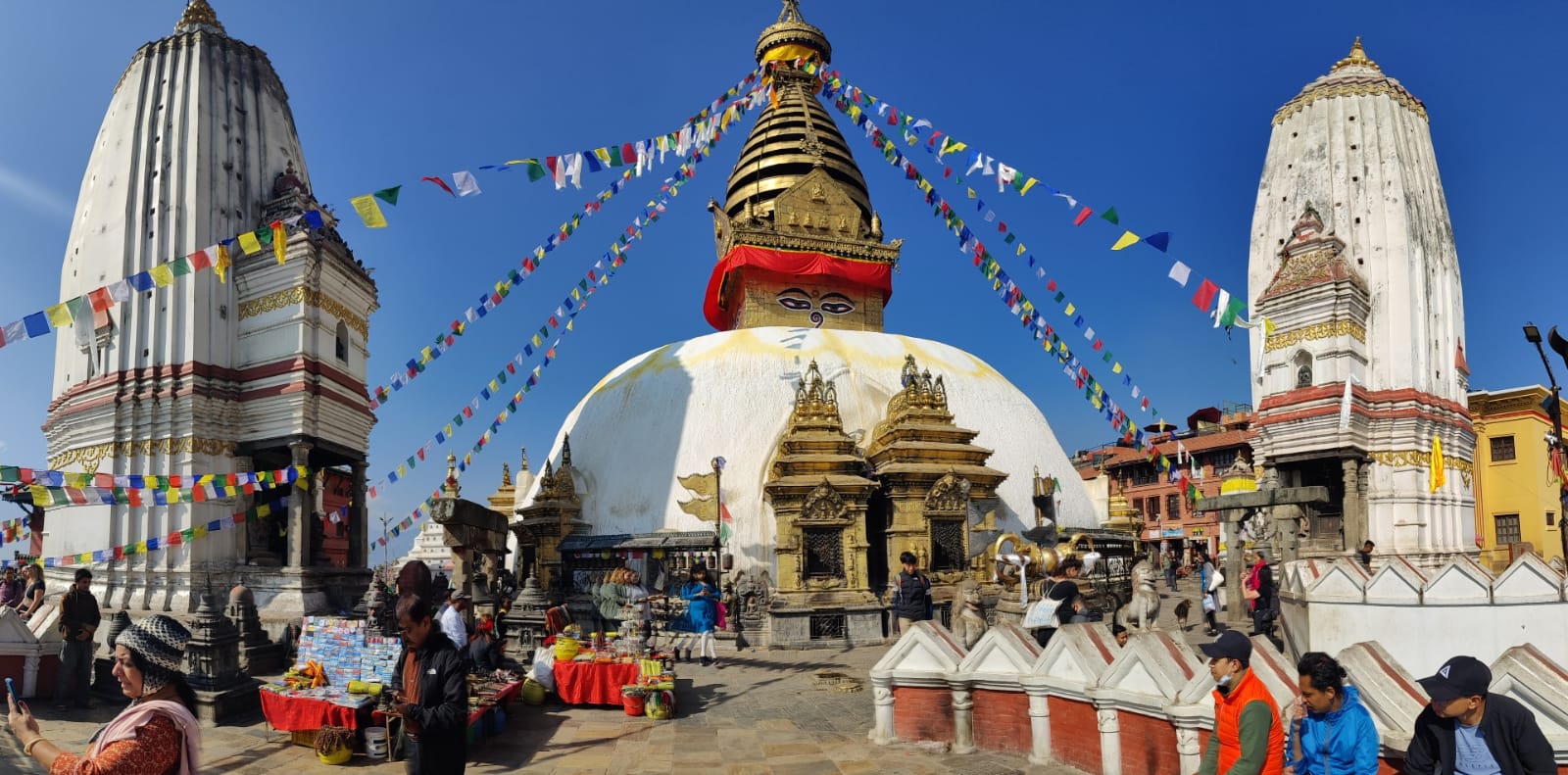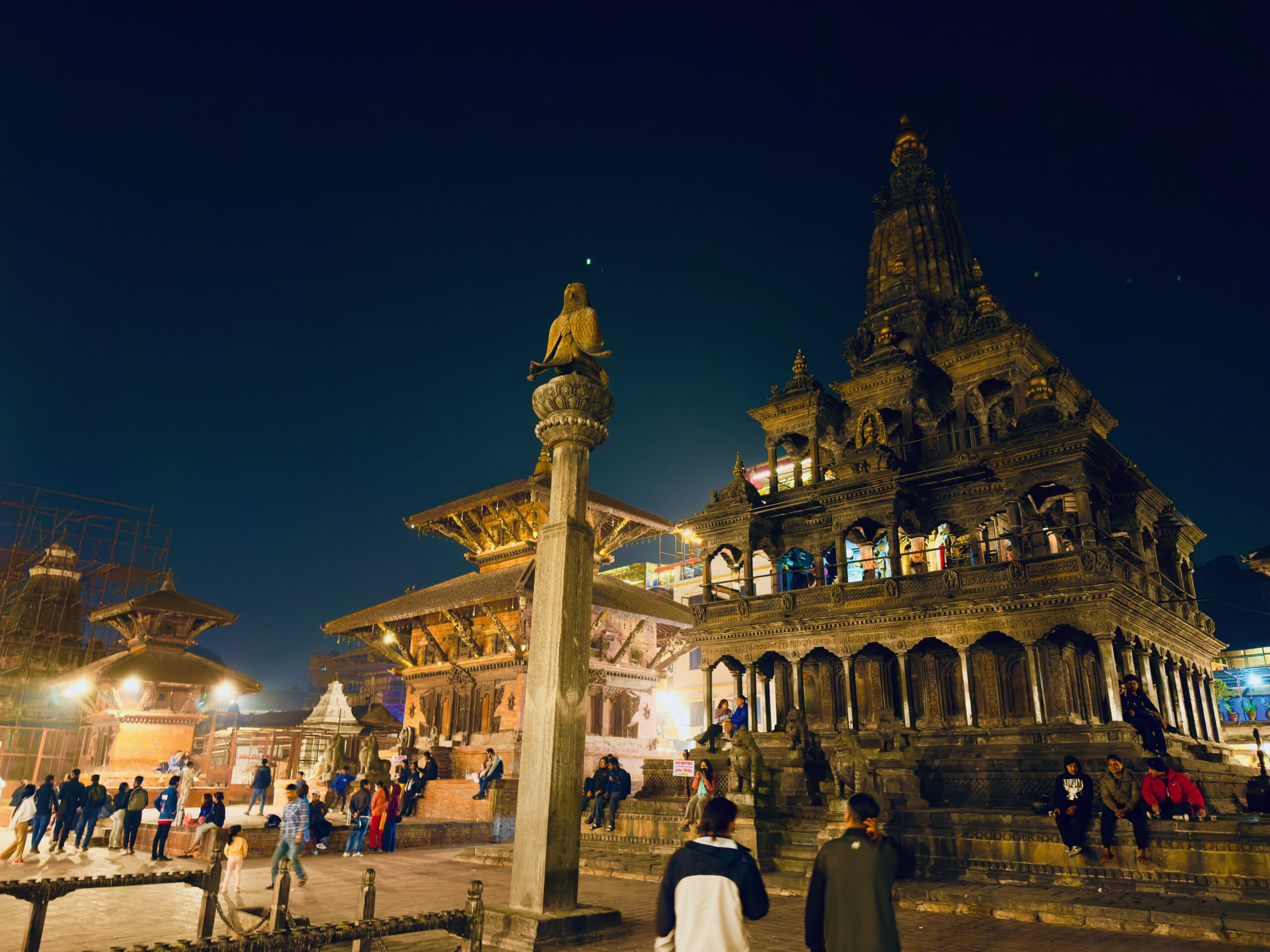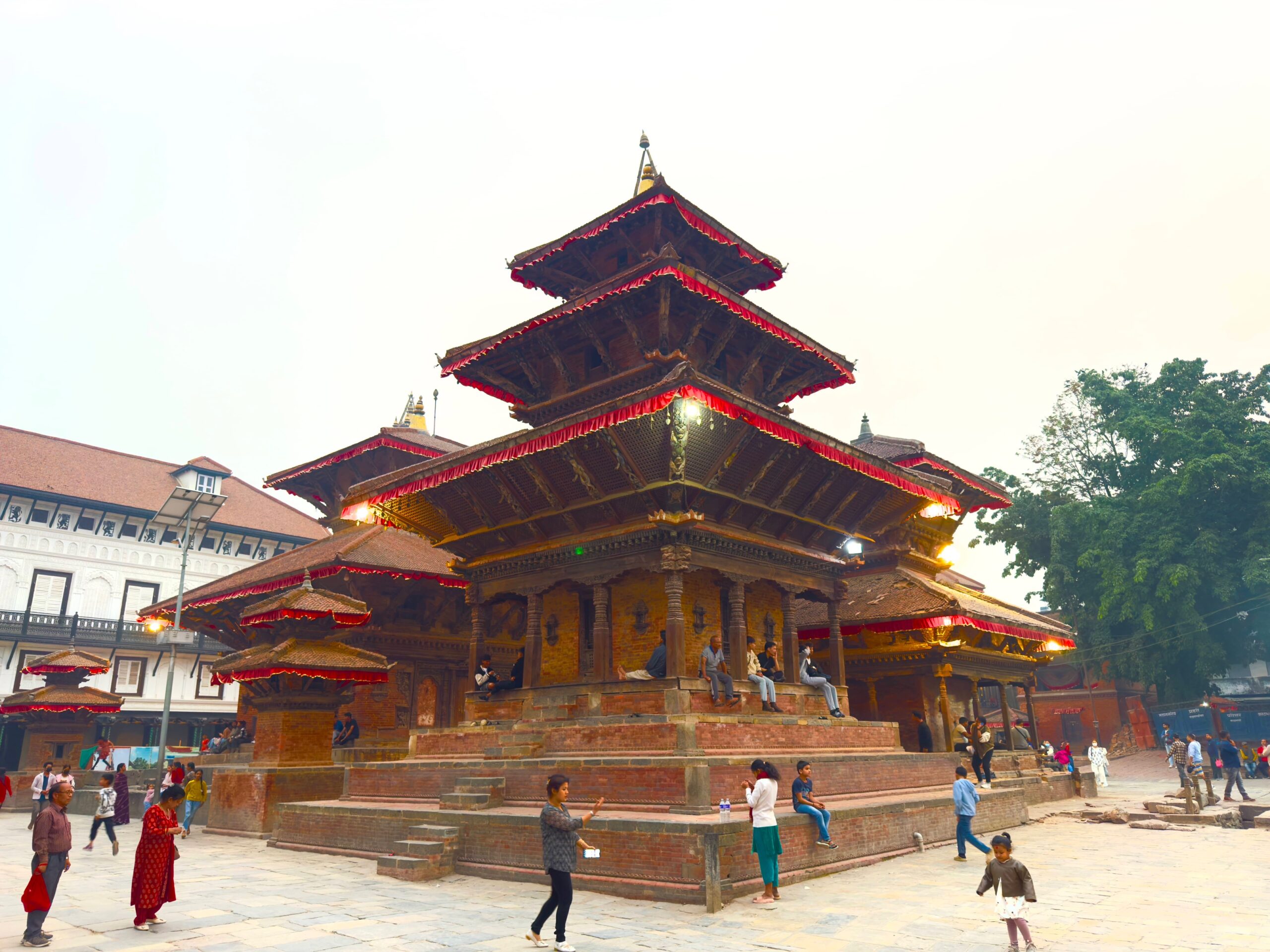Nepal, a land of towering Himalayan peaks, ancient traditions, and spiritual sanctuaries, is a treasure trove of cultural and natural wonders. At the heart of this enchanting country lies the Kathmandu Valley, a UNESCO World Heritage Site that has captivated travelers for centuries with its rich history, vibrant culture, and breathtaking landscapes. If you’re looking to immerse yourself in Nepal’s heritage while enjoying the serene beauty of the Himalayas and you have a limited amount of time, this 2-day historical and cultural tour is the perfect journey for you.
Over the course of two unforgettable days, you’ll explore the valley’s most iconic landmarks, from ancient temples and royal palaces to sacred stupas and bustling durbar squares. The tour also includes an excursion to Nagarkot, a tranquil hill station renowned for its panoramic views of the Himalayan range, including the majestic Mount Everest. Whether you’re a history buff, a spiritual seeker, or a nature enthusiast, this tour offers a perfect blend of culture, spirituality, and natural beauty.
Nepal is a multi-ethnic, multilingual, multi-cultural and a multi-religious country. It is a home of two major religion i.e. Buddhism and Hinduism as well as other small religious segments such as: Bon & Kirat. Kathmandu as a capital city, to some extent, represents such diverse characters of Nepalese society. The history, culture, religion and architecture of Kathmandu valley is the history of mingling & molding of diverse cultural & religious practices which were emerged, developed & practiced in different parts of the country, then used to be called Himavatkhand. Intangible cultural aspects still living through the lives of people residing in Kathmandu Valley which can be witnessed during the tour while tangible cultural aspects are & have been preserved in monuments, temples, stupas, monasteries & museums. Since the meaning of Kathmandu refers to the city of wooden temples (Kath-wood, mandu-temple) each and every corner of the city are encountered with such heritage in the form of stupa, temple, monastery, pati etc... The major seven sites of them are now called world heritage sites which present a magnificent art & architecture of medieval period which were built hundred to seven hundred years ago. Inscriptions, statues, geneology and Hitis (water spouts) are a living evidence that give a clear picture of history of more than two thousand years old.
The valley is described as "an enormous treasure house of art and sculptures", which are made of wood, stone, metal, and terracotta, and found in profusion in temples, shrines, stupas, gumbas, chaityas, and palaces. The art objects are also seen in street corners, lanes, private courtyards, and in open ground. It is also the home to a number of museums and art galleries, including the National Museum of Nepal. Most of the fairs and festivals in Kathmandu originated in the Malla period or earlier. Traditionally, these festivals were celebrated by Newars. Kathmandu is the city that is the gateway to the Nepalese Himalayas.
You will visit the city’s most well-known attractions: Swayambhunath Temple, which is the oldest Buddhist shrine and the best place to observe religious harmony between Nepalese Buddhists and Hindus; Pashupatinath Temple, an ultimate pilgrimage for Hindu throughout the world. Morning you will travel to the Swoyambunath stupa, also called a monkey temple, that offers spectacular views of Kathmandu valley and surrounding areas. You will spend about an hour there. Afterwards, head back down the hill with a vehicle for a tour to Pasupatinath Temple, one of the oldest & sacred Hindu shrines signifies Lord Shiva and a cremation center of KTM Valley. Next spot is Bouddhanath Stupa, one of the biggest Stupa around the world & the best place to observe the Tibetan people's lifestyle. We will explore fascinating stories, the monasteries, biggest stupas, and surrounding areas of Boudhanath. Similarly, Patan Durbar is the city of fine arts has hundreds of fascinating Hindu and Buddhist monuments back to the medieval Malla period.
Bhaktapur Durbar Square is, another unique attraction, an old town built in the shape of a conch shell, the city of devotees. Changunarayan is the oldest temple in Nepal has a distinct historical and architectural significance. The authentic and oldest ever inscription is located in the precinct of Changu Narayan. Along with the historical & cultural sites of our 3 days trip, excursion to Nagarkot, a popular hill resort area famous for sunrise view in the Himalayas, situated 20 miles (32km) northeast of Kathmandu at an elevation of 2,195m. Nepal historical & cultural tour will be your life-changing trip if you love to observe the culture of Buddhism and Hinduism.
Why This Tour is a Must-Do
- A Journey Through Time: Kathmandu Valley is home to seven UNESCO World Heritage Sites, and this tour covers five of them. You’ll step back in time as you explore centuries-old temples, palaces, and stupas that tell the story of Nepal’s rich cultural heritage.
- Spiritual Awakening: From the peaceful ambiance of Bouddhanath Stupa to the sacred rituals at Pashupatinath Temple, this tour offers a deep dive into Nepal’s spiritual traditions, blending Hindu and Buddhist influences.
- Himalayan Magic: The excursion to Nagarkot is a highlight of the tour, offering unparalleled views of the Himalayas. Witness the golden hues of sunrise and sunset over the snow-capped peaks, creating memories that will last a lifetime.
- Cultural Immersion: The tour takes you through the ancient cities of Kathmandu, Bhaktapur, and Patan, where you’ll experience the unique Newari culture, intricate architecture, and traditional craftsmanship.
- Perfect for Short Trips: Designed for travelers with limited time, this 2-day itinerary is packed with must-see attractions, ensuring you make the most of your visit to Nepal.
What Makes Kathmandu Valley Special?
Kathmandu Valley is often referred to as the “Cultural Capital of Nepal.” It is a melting pot of Hinduism and Buddhism, where ancient traditions coexist with modern life. The valley is home to some of the most significant religious and historical sites in the country, each with its own unique story and architectural splendor. From the bustling streets of Kathmandu to the serene hills of Nagarkot, every corner of the valley offers a new adventure.
Tour Highlights at a Glance
Day 1: Explore the spiritual and historical gems of Kathmandu, including Swayambhunath Stupa, Kathmandu Durbar Square, Bouddhanath Stupa, and Pashupatinath Temple. End the day with a mesmerizing sunset view in Nagarkot and an overnight stay.
Day 2: Witness a breathtaking sunrise over the Himalayas in Nagarkot, followed by visits to Changunarayan Temple, Bhaktapur Durbar Square, and Patan Durbar Square.
Who is This Tour For?
- History and Culture Enthusiasts: Dive deep into Nepal’s rich heritage and explore ancient temples, palaces, and UNESCO World Heritage Sites.
- Spiritual Seekers: Experience the spiritual energy of sacred sites like Bouddhanath and Pashupatinath.
- Nature Lovers: Enjoy the serene beauty of Nagarkot and the majestic Himalayan views.
- Photographers: Capture stunning landscapes, intricate architecture, and vibrant cultural scenes.
- Short-Term Travelers: Perfect for those with limited time who want to experience the best of Kathmandu Valley.
A Glimpse into the Itinerary
Day 1: Spiritual and Historical Exploration
- Swayambhunath Stupa: Begin your journey at this ancient Buddhist site, often called the “Monkey Temple.”
- Kathmandu Durbar Square: Step into the heart of Kathmandu’s history with its royal palaces and temples.
- Bouddhanath Stupa: Immerse yourself in the peaceful ambiance of one of the largest stupas in the world.
- Pashupatinath Temple: Witness the sacred rituals at this revered Hindu temple.
- Nagarkot Sunset: End the day with a stunning sunset view and an overnight stay in Nagarkot.
Day 2: Sunrise and Cultural Delights
- Nagarkot Sunrise: Wake up to a magical sunrise over the Himalayas.
- Changunarayan Temple: Visit one of the oldest Hindu temples in Nepal.
- Bhaktapur Durbar Square: Explore the medieval city of Bhaktapur, known for its well-preserved architecture.
- Patan Durbar Square: Conclude your tour with a visit to Patan, the city of fine arts.
Why Choose This Tour?
This Kathmandu Historical Cultural Tour with Nagarkot Excursion is more than just a sightseeing trip—it’s an opportunity to connect with Nepal’s soul. From the spiritual energy of its temples to the awe-inspiring beauty of the Himalayas, every moment of this tour is designed to leave you with a deeper appreciation for Nepal’s culture and natural wonders. Whether you’re a first-time visitor or a seasoned traveler, this journey promises to be an unforgettable experience.
Key Highlights
-
Visit UNESCO world heritage sites
-
Sunrise view from Nagarkot
-
Insightful historical and cultural tour
-
Natural landscape & Himalayan range of Nepal





